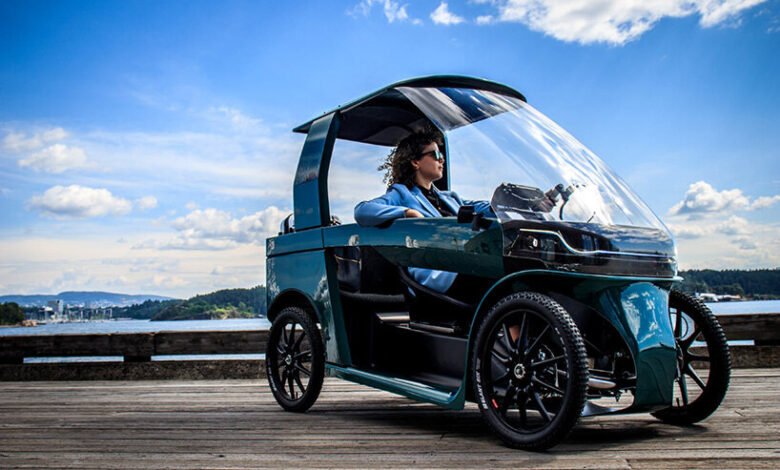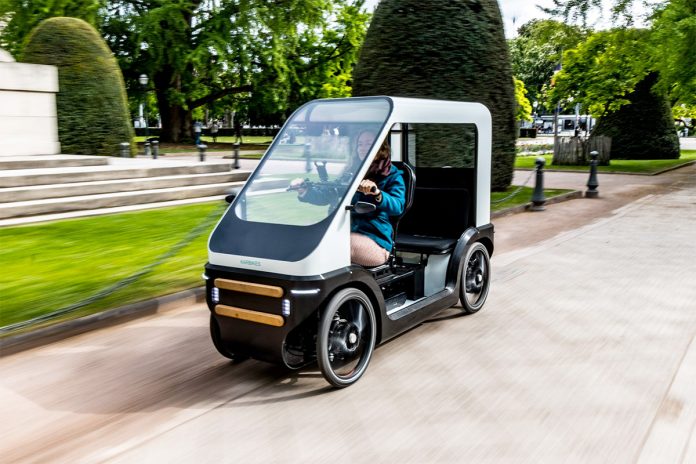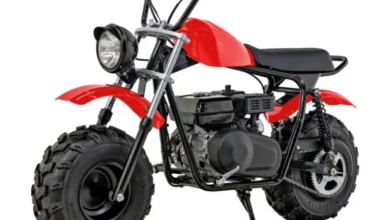Bike Car: The Hybrid Ride Changing the Way We Travel

The line between bikes and cars is starting to blur. Over the past few years, a new type of vehicle—often referred to as a bike car—has emerged, blending the eco-friendly, pedal-powered simplicity of a bicycle with the comfort, safety, and speed of a car. While the term “bike car” might sound unusual at first, it’s a real innovation shaping modern transportation. Whether you’re an urban commuter tired of traffic jams or someone passionate about sustainable mobility, the bike car is worth knowing about.
In this article, we’ll dive deep into what a is, how it works, why it’s gaining popularity, and what its future might look like. Let’s roll—pun totally intended.
What Exactly Is a Bike Car?
A bike car is essentially a hybrid vehicle—part bicycle, part car. It combines pedal power (or sometimes electric assist) with an enclosed or semi-enclosed frame that gives you more protection and comfort than a regular bicycle. Imagine cycling without worrying about rain, strong wind, or even heavy sun exposure. That’s the kind of advantage bike cars offer.
While they come in many forms, generally feature three or four wheels for stability, a lightweight frame, and an aerodynamic design. Some are fully human-powered, requiring you to pedal like a normal bike, while others have small electric motors that give you an extra boost. Many even include storage space, making them practical for shopping trips or small cargo deliveries.
These vehicles are popular in parts of Europe, especially in bike-friendly cities like Amsterdam, Copenhagen, and Berlin, where people value eco-conscious transportation options. But their popularity is spreading globally as urban areas grapple with traffic congestion and rising fuel costs.
Why Bike Cars Are Becoming a Big Deal

The appeal of bike cars is easy to understand once you think about the challenges of modern transportation. Cities are becoming overcrowded, air pollution is a major concern, and fuel prices seem to climb every other week. The bike car provides a sweet spot between cycling and driving—a way to travel faster and more comfortably than a traditional bike, without the environmental impact of a gasoline-powered vehicle.
One of the key drivers behind their growth is sustainability. With zero tailpipe emissions, bike cars help reduce urban air pollution. For eco-conscious commuters, this is a big plus. Additionally, because they’re smaller and lighter than regular cars, they require less energy to operate, especially when electric assistance is involved.
Another reason is accessibility. Many cities are investing in cycling infrastructure—dedicated lanes, secure parking, and better road safety measures. Bike cars fit right into this ecosystem, giving people the option to skip traffic entirely by using bike lanes instead of sitting in gridlock.
And finally, there’s the fun factor. Riding a bike car feels different from both cycling and driving—it’s a blend of exercise, mobility freedom, and a touch of futuristic flair. It’s hard not to turn heads when you pull up in one.
The Design and Technology Behind Bike Cars
Bike cars come in several designs, but most share common features that make them unique. The body is often made from lightweight yet durable materials like aluminum, carbon fiber, or reinforced plastic. This ensures the vehicle is easy to pedal but sturdy enough to handle everyday wear and tear.
Inside, bike cars often have adjustable seating for comfort, space for groceries or a backpack, and even small dashboards with digital displays showing speed, distance, and battery levels (for electric-assisted models). Many designs include weatherproof covers, which are essential for all-season commuting.
On the tech side, electric-assist use pedal-assist motors—meaning you still pedal, but the motor kicks in to help you go faster with less effort. Battery ranges vary, but many can go 30–50 miles on a single charge, which is more than enough for most urban commutes.
Some high-end models also come with solar panels on their roofs, allowing you to trickle-charge the battery just by parking in the sun. This innovation makes them even more appealing for eco-friendly users.
Pros and Cons of Owning a Bike Car
Like any vehicle, bike cars have their strengths and weaknesses.
Advantages:
- Eco-friendly: Zero emissions when pedaled; minimal emissions when using electric assist.
- Cost-effective: No fuel costs, and maintenance is cheaper than for a car.
- Compact: Easy to store, park, and maneuver in busy areas.
- Weather protection: Better than a regular bike for riding in rain or cold.
Drawbacks:
- Speed limitations: Even with electric assist, they can’t match the speed of a regular car on highways.
- Initial cost: High-quality can be expensive upfront.
- Storage space: While better than a bike, they still can’t haul as much as a regular car.
- Regulations: In some areas, bike cars face unclear road rules.
Understanding these pros and cons is crucial before making a purchase. A car works best for short-to-medium commutes within cities or suburbs but might not be ideal for long-distance highway travel.
Who Should Consider a Bike Car?
cars aren’t for everyone—but they’re perfect for certain types of users. Urban commuters who want to avoid traffic while staying active will love them. If you live in a city with good cycling infrastructure, a car can actually be faster than driving during rush hour.
They’re also great for eco-conscious families. Some models have space for a child seat, making school drop-offs a breeze without burning gas. Delivery workers in cities are also adopting them for carrying packages—quicker than a van in dense traffic, but still weather-protected.
And let’s not forget the adventure crowd. If you like exploring new places at a relaxed pace, a bike car can be your ticket to scenic rides without worrying about rain or wind.
The Future of Bike Cars
Given the current trends in urban mobility, bike cars are likely to become more common in the next decade. We’re already seeing governments offer incentives and subsidies for e-bikes, and bike cars might soon fall under similar programs. With improvements in battery efficiency, materials, and solar charging, they’re only going to get better.
There’s also potential for shared bike car services, similar to bike-sharing programs in major cities. Imagine renting a bike car for a quick trip across town, then dropping it off at a designated station—it’s a very real possibility.
Ultimately, could play a major role in reducing traffic congestion, cutting carbon emissions, and making city life more pleasant. They’re not just a novelty—they’re a practical, sustainable solution for modern transportation needs.
Final Thoughts
The bike car represents more than just a quirky transportation option—it’s part of a broader shift toward human-centered, eco-friendly mobility. As cities adapt to changing transportation demands, bike cars offer a unique blend of health benefits, environmental responsibility, and pure riding enjoyment.
If you’re someone who wants to ditch the daily traffic grind, save on fuel, and reduce your carbon footprint, a bike car might be the perfect fit. Sure, they’re not going to replace all cars tomorrow, but as part of a smarter transportation mix, they could transform how we move through our cities.


